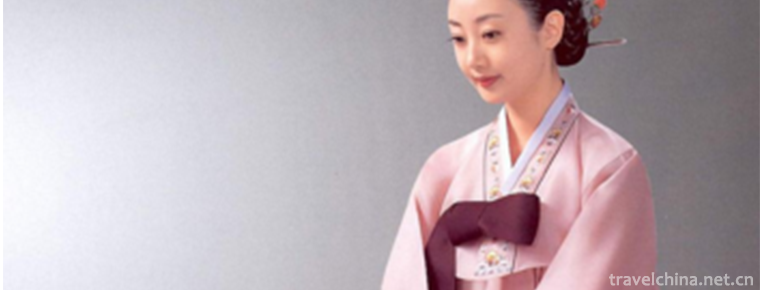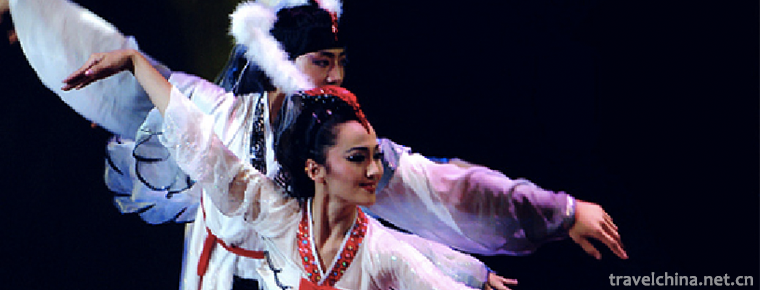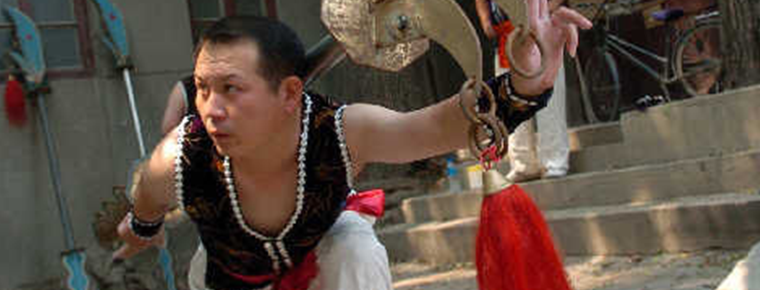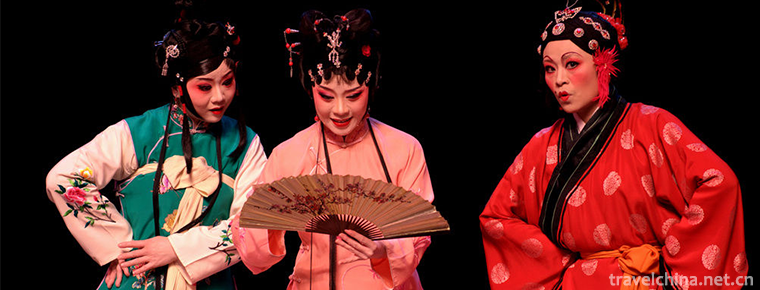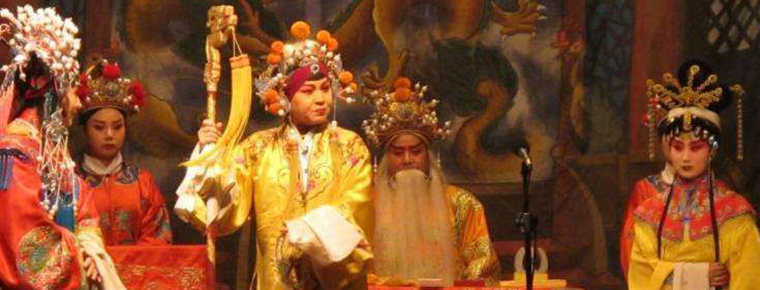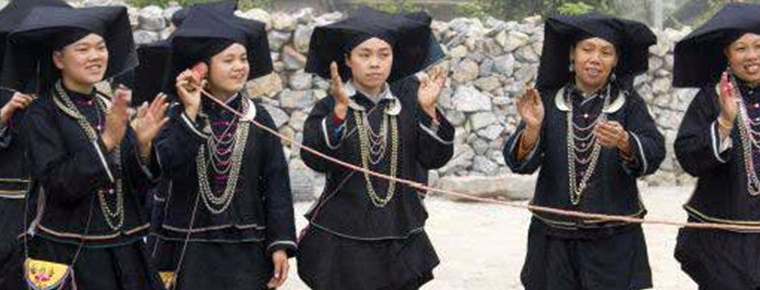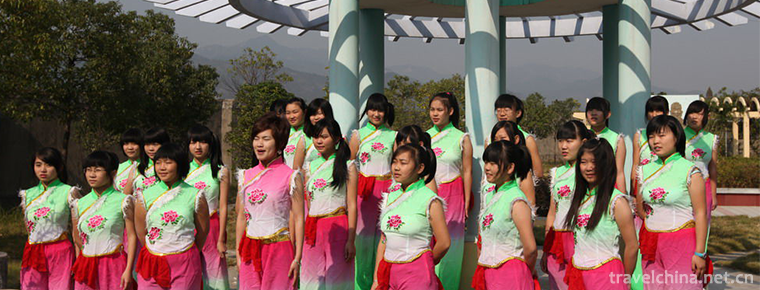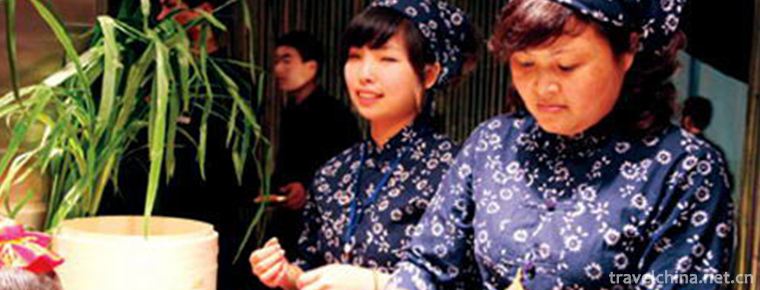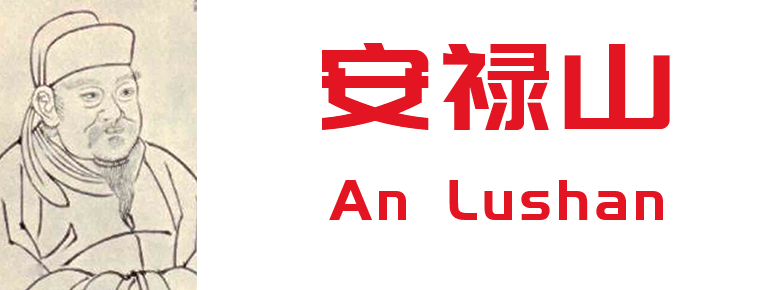Firing Techniques of Fengxi Porcelain
Firing Techniques of Fengxi Porcelain
Fengxi Porcelain Firing Technology, a local traditional technology in Fengxi District, Chaozhou City, Guangdong Province, is one of the national intangible cultural heritage.
The firing process of Fengxi porcelain is very complicated. Generally, a Fengxi porcelain is formed through eight processes: material selection, moulding, mold turning, shaping, glazing, firing, painting and baking.
On June 7, 2008, Fengxi porcelain firing technology was approved by the State Council of the People's Republic of China and listed in the second batch of national intangible cultural heritage list, item number_-96.
historical origin
According to archaeological data, the earliest pottery found in ancient Chaozhou area is the lower layer of Xiangshan site and Dongkengzai site in South Australia. It dates from about 8000 years ago and belongs to the early Neolithic Age.
In the Shang and Zhou Dynasties, there was a discovery named "the type of floating shore culture" by archaeologists. The type of floating shore is in the coexistence of copper and stone, as well as the coexistence of printed pottery and glazed pottery.
In the Han Dynasty, factory pottery kilns appeared in the northwestern suburbs of Chaozhou City, and various utensils were unearthed in its high hills and mountainous areas. This can be said to be the beginning of the local ceramic sculptures of figures and animals on a certain scale, in addition to household utensils.
In the Jin Dynasty, ceramic kilns still existed in the northern suburbs (although they were buried underground until they were destroyed when the Garden Development Zone was built in 1992). From the perspective of utensils, almost all the utensils of the same period unearthed in Lingnan can be found in the tidal land. Facts have proved that the ceramics of Chaozhou have greatly surpassed those of the previous dynasties in the period of the Jin, Northern and Southern Dynasties. It laid the foundation for the prosperity of ceramics in the Tang and Song Dynasties in Chaozhou.
In Tang Dynasty, Chaozhou ceramics ushered in a period of great development. At that time, the porcelain of Chaozhou kiln mainly included bowls, dishes, cups, cylinders, pelvis, basins, pots, beans, pillows, bowls, bottles, altars and so on, as well as tiles.
The Song Dynasty ushered in a brilliant peak of Chaozhou ceramics. Chaozhou has become the porcelain capital of Lingnan.
The porcelain of Chaozhou kiln in Song Dynasty is of fine texture. There are bowls, dishes, dishes, pegs, basins, bottles, pots, military support, cups, cups, pots, stoves, lamps, boxes, tea trays, pots, jars, altars, pillows, stationery inkstones, penholders, water injection and so on.
In the Ming Dynasty, because of the original ceramic production base of Fengxi in Chaozhou, the convenient transportation between land and water, the source of raw materials and the westward migration of the original kiln households in Fengshan and other places, Fengxi rose rapidly as a new ceramic capital in the Ming Dynasty, which continued the prosperous situation of ceramic production in the ring City area centered on Bijiashan kiln in the Song Dynasty.
The red and green color of Chaozhou kiln in Ming and Qing Dynasties had a great influence on the development of ceramics in Vietnam and Japan. This shows that Fengxi ceramics in Ming and Qing Dynasties not only inherited the style of Chaozhou kiln in Tang and Song Dynasties, but also continued the export-oriented marine cultural characteristics. In this era, Fengxi's porcelain sculptures can be divided into personages, animals and bionics.
At the end of the Qing Dynasty and the beginning of the Republic of China, hollow-out display porcelain (later known as "porcelains") began to appear in batches.
Since New China, Fengxi District has become the leader of China's porcelain capital. There are more than 4000 ceramic manufacturers, more than 70,000 workers, annual ceramic output value of more than 7 billion yuan, annual export earns more than 300 million US dollars, and products are exported to more than 150 countries and regions in the world. Chaozhou Ceramics is famous for its characteristics of "white as jade, fine as silk, thin as paper and bright as mirror". In 2004, China Light Industry Federation and China Ceramic Industry Association awarded Chaozhou the honorary title of "China Ceramic Capital".
Process characteristics
Porcelain can be divided into daily-use porcelain, art porcelain, architectural sanitary porcelain and special-purpose porcelain from the point of view of its use function; from the point of view of decoration technology, there are forms of underglaze, glaze, glaze, color glaze and comprehensive decoration, and there are various decorative means on and under glaze. All of these have their own unique operation methods and artistic characteristics.
The function of art porcelain produced by firing technique of Fengxi Porcelain is mainly display appreciation, so it is also called art display porcelain or art display porcelain. Fengxi Art Display Porcelain can be divided into character porcelain sculpture, animal porcelain sculpture, porcelains and flowers, vases (plates) paintings, modern ceramics and ceramic murals, etc. Among them, in addition to the bottle (plate) type of color painting involves the overall design and color painting of the bottle shape, the other major skills are embodied in carving, kneading, carving, pasting and sculpture.
Through the firing technology of Fengxi Porcelain, Tonghua Porcelain is a kind of carved and pasted hollow, exquisite and exquisite ceramic art with local characteristics in Fengxi area of Chaozhou. Its main feature is to carve continuous geometric patterns or images of flowers, figures and animals on the ceramic body. Tonghua Porcelain is often combined with pinched and pasted porcelain flowers, which is called "sending flowers through flowers". With Ye Zhuqing as the main design and Wang Longcai as the main creator, the 1.2m three-layer "Friendship Flower Vase" integrates flowers, stacking and pasting three-dimensional porcelain flowers and kneading figures, which is a breakthrough in the multilayer open-flower porcelain of the billet body at that time.
Inheritance and protection
Inheritance value
The firing technique of Fengxi ceramics provides a lot of data reference value in the unearthing of porcelain cultural relics; from various historical dynasties, Fengxi ceramics play an important role. The ceramics laid out by the court not only can decorate and give people a sense of solemnity, but also affect the way of cultural exchange between China and foreign countries; Fengxi ceramics have a complete variety and various styles. It can not only provide art display and ornamental value, but also provide practical appliances in people's life, and also bring economic income to Fengxi District.
Inheritance status
With the changes of the times, the production enterprises of porcelain have been restructured and the original creators scattered. Many old ceramic artists have been forced to change their ways to make a living. Most young and middle-aged artists have gone to Shanghai to do business, resulting in a situation of lack of successors. The production of Fengxi ceramics has shrunk dramatically, and some skills have been lost, so protection and rescue are urgently needed.
Inheriting characters
Wang Longcai, male, was born in February 1932. In May 2009, Wang Longcai was selected as the representative successor of the third batch of national intangible cultural heritage projects. Chaozhou City, Guangdong Province, declared the project: Fengxi porcelain firing technology.
Wu Weiming, male, was born in August 1938. In December 2012, Wu Weiming was selected as the representative successor of the fourth batch of national intangible cultural heritage projects. Chaozhou City, Guangdong Province, declared the project: Fengxi porcelain firing technology.
protective measures
In 1959, in order to protect and inherit the firing technology of Fengxi ceramics, many experts established Guangdong Fengxi Ceramics Industry Research Institute.
In 2012, a number of new cultural facilities, such as the Museum of Culture and Art, the Museum and Rao Zongyi Academic Museum, were constructed in Chaozhou, and an exhibition hall of intangible cultural heritage was established to protect Fengxi porcelain firing skills in various forms.
social influence
Important exhibition
In 1980, Wang Longcai independently designed and manufactured the "Spring Porcelain Carving Basket" into the Great Hall of the People in Beijing, the capital, which was displayed in the Guangdong Hall. Sister works were also collected by the Guangdong Arts and Crafts Museum.
In 1985, "Qiongkuang Tong Vase" was held in Hong Kong at the "National Famous Ceramics Exhibition", selling for nearly 150,000 yuan, ranking first in all exhibits.
In May 2011, the firing technology of Fengxi porcelain in Chaozhou City was exhibited in the intangible cultural heritage Hall of the 7th "Cultural Expo", which attracted a large number of visitors. It further promoted the local traditional culture of the city and played a positive role in promoting the protection of intangible cultural heritage in the city.
In December 2013, Fengxi porcelain firing technology appeared in Fengxi Cultural Family Visiting Activities, enriching the people's spare time life, but also enhanced the understanding of traditional skills, activities are very targeted and effective.
Honorary commendation
In 1959, Lin Hongxi and Zheng Caishou co-authored the Fifteen-Year Plan, which won the first prize in China's arts and crafts.
In 1986, Wang Longcai, the successor of the design and production of "Baiyutong vase", as the leading representative of "Fengxi moulding series through vase", participated in the sixth Prodiv International Expo in Bulgaria, and won the gold medal.
In 1998, Fengxi District was composed of 1352 relief porcelain plates, which were recorded in the Guinness World Records in July of that year.
Wu Weiming, the successor, has won the first prize in China for his creation of 64 Sparrow Pin Western Tableware and 45 Honeysuckle Chinese Tableware.
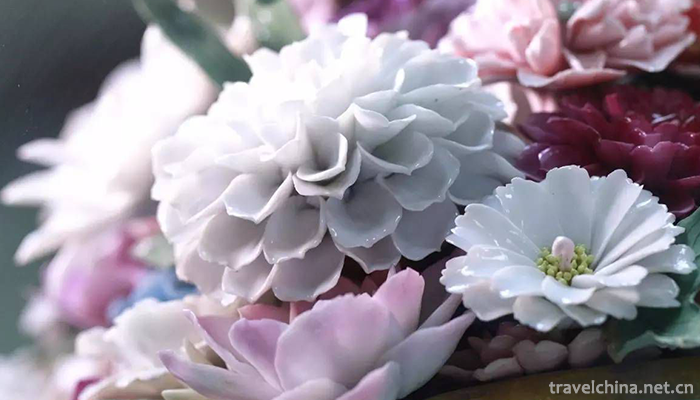
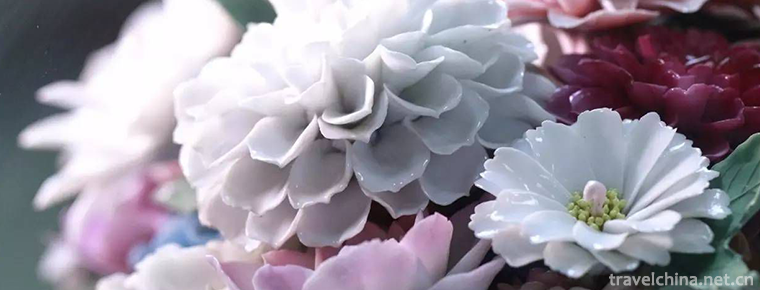
Firing Techniques of Fengxi Porcelain
-
Laojunshan Jiguandong Tourist Area
Jiguan Cave is located in Luanchuan County, Luoyang City, Henan Province, three kilometers west of the county seat. It is located on the half-hillside of Jiguan Mountain
Views: 210 Time 2018-12-09 -
Korean Costume
Korean costume, Korean traditional folklore, one of the national intangible cultural heritage.
Views: 157 Time 2019-04-16 -
Korean Crane Dance
Crane Dance of the Korean Nationality has a long history and is a unique dance performance form of the Korean Nationality in China. It has the national characteristics and the value of artistic resear
Views: 213 Time 2019-04-16 -
Hui Heavy Knife Wushu
Heavy knife is the original name of big knife. It is a traditional weapon around Beijing and Tianjin. It has a history of thousands of years in China. The original name of Jinmen
Views: 192 Time 2019-05-04 -
Liyuan Opera
Liyuan Opera is one of the traditional operas in Fujian Province. Liyuan Opera originated in Quanzhou in the Song and Yuan Dynasties. It is also called "the voice of Fujian and Zhejiang" and
Views: 205 Time 2019-05-12 -
Gongs and drums
Gong and drum zaju, also known as "zaju of Gong and drum" and "long Yan zaju", is one of the local traditional dramas in Shanxi Province and Henan Province and one of the national
Views: 138 Time 2019-05-15 -
Napo Zhuang Folk Songs
Napo Zhuang, also known as "Heiyizhuang", is a unique ethnic group among the Zhuang people. It calls itself "Min", "Zhong", "Ouch". Now there are about 518,000
Views: 131 Time 2019-06-06 -
Tongcheng Song
Tongcheng Song is a kind of local folk song originating from Tongcheng, Anhui Province. It is a kind of local folk literature in the form of rhyme created by the local working people collectively. At
Views: 216 Time 2019-06-21 -
Production Techniques of Wufangzhai Zongzi
The traditional production techniques of Wufangzhai zongzi are mainly divided into 36 processes, such as material selection, rice dipping, leaf boiling, stuffing, shelling, wrapping, thread binding an
Views: 238 Time 2019-06-29 -
Southwest University of Science and Technology
Southwest University of Science and Technology is located in Mianyang City, Sichuan Province. The school is a university built jointly by the Sichuan Provincial People's Government and the Ministry of
Views: 230 Time 2019-08-31 -
An Lushan
An Lushan (703 to 757 years). Yingzhou (today's Liaoning Chaoyang) Kang Name Rolling hill 。 His father may be kang Hu people Mother A Stead S is a the turks Witch. According to legend, his mother did
Views: 293 Time 2019-09-11 -
Life of Suining residents
In 2019, the per capita disposable income of Suining residents was 24865 yuan, an increase of 9.6% over the previous year. The per capita disposable income of urban residents was 34854 yuan, an increase of 3024 yuan over the previous year and an
Views: 348 Time 2020-12-16

